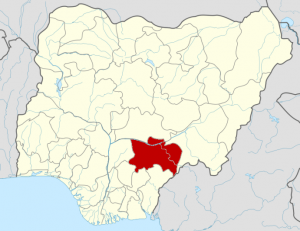Mexico’s solution to the Covid-19 educational crisis: Put school on TV

Get up early, shower, and sit at the table for a quick desayuno of bread with jam, some cookies, and either coffee or tea for the grownups. “I miss this, the waking up routine, always in a rush,” said Mariana Yoko Jiménez Arzate, resident mom and conductor of this early morning orchestra, knowing that this year will be different.The normal post-breakfast step is a mad dash to school a few blocks away. But the 2020 version of that dash will end just 10 feet away, in the living room of the apartment in Mexico City’s Moctezuma neighborhood. That’s where both Jiménez kids will do most of their learning this semester — by watching TV. “It’s good we’re still having class,” said Mariana’s 12-year-old daughter Giselle. “But I’m sad because I was going to start high school and meet new people.” The great educational dilemmaMexico’s government won’t allow in-person classes this year, which means Mexico’s 30 million students will all be forced to learn remotely.Officials say the coronavirus pandemic — which has claimed roughly 60,000 lives amid more than 550,000 confirmed cases — is still too dangerous to allow kids back in the classroom. Remote learning is difficult even in developed countries. But in places like Mexico, taking that English or math class online isn’t so easy — only 56% of households have access to the internet, according to government statistics. So if the law requires all Mexican kids to be offered a public education, the government has decided the best way to do that is over the airwaves, with 93% of households having a television. Lights, camera … classesInside a brightly lit studio at Mexico City TV station Channel 11 last week, fifth grade teacher Omar Morales squinted as a young man with bright purple hair applied makeup to his face.”Ok, this is your floor director,” a producer told him. “She is your eyes and ears out here, listen to what she tells you, look at the camera she tells you to look at and you’ll be fine.”This time last year, Morales was just a public school teacher setting up his classroom, getting ready to hug his kids on their first day of school.Now, part actor, part teacher, he practiced delivering a lesson plan about the elements of sound that will eventually be watched by millions.”It’s challenging,” he says modestly. “It’s no longer 40 kids in a class where I know their names, passions, their favorite games. Here, I’m locked in a set, but I know there’s millions of kids out there who still need that knowledge.”Morales is part of an ambitious government plan to record a comprehensive set of lessons for all grade levels pre-K through high school and then broadcast them on TV.It has worked out agreements with different TV channels to broadcast that content, 24 hours per day, 7 days per week, with different grade levels at different hours.The government will also use radio programs to reach kids with no TV or internet, the majority of which the government says live in remote indigenous communities.”There is no precedent for something this big,” said Rodolfo Lara Ponte, who runs the radio education program during the pandemic. “We have planned to have 640 programs, across 18 radio stations in 15 states of the country,” he said, adding many are recorded in indigenous languages unique to different regions. For now, both the TV and radio programs will run through December but everything is subject to change based on how the pandemic plays out here over the next several months.Government officials overseeing the program uniformly say the goal is to get kids back in the classroom as soon as possible, but for now, they say they’re doing their best.”It was a tough decision not to reopen schools,” said Maria Meléndez, the ministry’s Director of Curriculum Development. “But by doing the TV and radio classes, that means not letting the education gap get wider.” Mind the gap”Education gap” is a polite way of saying that rich kids often get better educations than poor kids.This was a problem in Mexico even before the coronavirus forced schools to close in March. For example, relatively wealthy Mexico City saw a 92% secondary, or high-school level, education enrollment rate as of 2019. In the much poorer state of Chiapas, that rate stood at only 59%.But the pandemic could exacerbate what was already an acute problem — and television and radio can’t solve underlying disparities.You don’t need to be an education expert to conclude that wealthier students with internet access and the ability to interact with a teacher, even remotely, might fare better than those who get their classes the same way they watch cartoons. “Their only learning this year will be what they get from a TV,” said Erandi Jacobo Martínez, a public school teacher in Coyoacán, a charming southern barrio in Mexico City. “And if they have any questions, our ability to help will be really limited.”Another issue is evaluation. The Ministry of Education says it’s devaluing quantifying student progress for the moment, not only because it’s difficult to do but because of the added stress it could place on students. “Talking about evaluations is ambitious and I think it’s not where we are right now,” said Meléndez. “When kids return to school, they will be evaluated for what they’ve learned.”In the meantime, the burden on parents, already high during any normal school year, will dramatically increase this year. If kids are going to make progress, parents in the home will be the primary driving force.”If we cannot see them, we have to trust in the parents that they share with us about their kids and what they’re working on,” said Martínez.’You have to adapt’Mariana, the single mom who works from home, says she is ready for the challenge. She’s even prepared daily schedules for her daughter, 12-year-old Giselle, and for her neighbors’ two young daughters, Tania, 6, and Fatima, 9. “It has to work,” she told us over a steaming cup of green tea. “You can’t ever compare this to in-person classes but we need to give our all. We need to adapt.”Tania and Fatima agree — mostly. We asked them what they’d miss about not going to school.”My friends,” said Tania. “And my teacher.”For kids, there are some things even a little extra TV time can’t fix.







